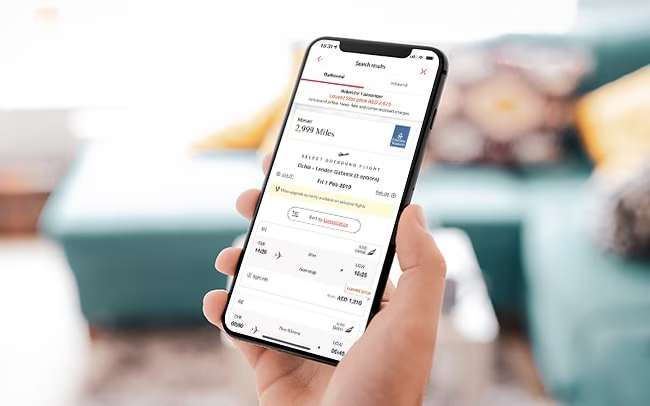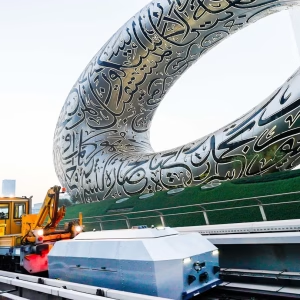The next time you check the back of your smartphone, you might see something surprising. Instead of the usual “Made in China” or “Assembled in Vietnam,” it could say: MakeInEmirates.
This new label is part of a larger movement within the United Arab Emirates to localize manufacturing and reduce dependence on foreign production. And smartphones are now front and center in that mission.
MakeInEmirates Smartphones: A National Vision in Motion
The term MakeInEmirates smartphones is not just a label. It reflects the UAE’s national vision to grow its manufacturing sector, especially in advanced industries like electronics.

Launched under the Ministry of Industry and Advanced Technology (MoIAT), the “Make in the Emirates” initiative supports local production across sectors. Smartphones, tablets, and electronic devices are now becoming key focus areas.
The UAE wants to position itself as a global tech hub, and that includes designing and building its own consumer electronics.
Why Smartphones Are Now Being Made in the UAE
Several factors are driving this shift:
- Economic diversification away from oil
- Lessons from global supply chain disruptions during the pandemic
- Strong government support for industrial investment
- Environmental goals tied to reducing overseas shipping
The UAE is offering incentives, infrastructure, and policy support to help manufacturers build and assemble devices locally. Industrial zones like Khalifa Industrial Zone Abu Dhabi (KIZAD) and Dubai Silicon Oasis are playing a critical role in hosting tech production facilities.
Companies Backing the MakeInEmirates Smartphones Push
Several manufacturers are already part of this new ecosystem.
- NexTek and Trescon Technologies are early movers setting up production lines within the UAE.
- Transsion, a Chinese brand popular in Africa, is working on local assembly.
- Indian smartphone maker Lava has signed agreements to produce devices within UAE borders.
Even large brands like Samsung and Xiaomi are reportedly exploring regional partnerships to benefit from local assembly, reduced costs, and quicker market access.
Can UAE-Made Phones Compete Globally?
For now, most MakeInEmirates smartphones fall in the affordable and mid-range categories. These devices are often targeted toward budget-conscious users in the Middle East, South Asia, and Africa.
However, things are changing fast. With growing investment in research and development, some local companies are beginning to test mid-range smartphones with better cameras, longer battery life, and improved software integration.
The ambition is clear: create globally competitive smartphones designed, built, and supported within the Emirates.
Economic Benefits of Local Smartphone Production
The shift to local manufacturing isn’t just about having a new label on your phone. It comes with real economic value:
- Thousands of high-tech jobs in engineering, manufacturing, and logistics
- A stronger non-oil GDP supported by industrial growth
- New educational opportunities in electronics, robotics, and design
Universities like Khalifa University and the American University of Sharjah are already updating their programs to prepare students for careers in this sector. That means more local talent will be ready to contribute to the growth of UAE-based tech industries.
How These Phones Are Being Built in the UAE

Most local manufacturers are using what’s called a semi knock-down (SKD) model. In this setup, parts such as processors, screens, and batteries are imported, then assembled locally.
The long-term goal is to move toward full local production. This will require investment in:
- Chip design and fabrication
- Advanced robotics
- Quality testing labs
- Local supply chains for small parts
As the infrastructure matures, the percentage of a phone built in the UAE will steadily increase.
Potential Challenges for MakeInEmirates Smartphones
While the program shows strong promise, it also faces some real-world challenges:
- Local manufacturing of key components like chips is still limited
- Competing with large-scale factories in China or India is difficult
- New brands from the UAE may struggle to gain international trust
These are common hurdles for any emerging tech manufacturing ecosystem. However, with sustained investment and strategic partnerships, these challenges are expected to lessen over time.
What This Means for Consumers in the UAE
If you’re buying a new smartphone in the UAE today—especially an entry-level or mid-range model—there’s a good chance it was at least partially assembled in the country.
Here’s what that means for you:
- Shorter delivery times
- Lower prices due to reduced import costs
- Easier access to service and repair centers
- Local warranty and product support
- Contribution to the UAE’s economy and innovation ecosystem
As trust grows in these locally assembled devices, customer adoption is expected to increase.
The Future of MakeInEmirates Smartphones

Looking ahead, the goal is to turn the MakeInEmirates smartphones label into a symbol of trust, quality, and innovation.
Beyond smartphones, the UAE hopes to manufacture tablets, laptops, and even smart home devices. There are early signs of investment in next-gen tech like foldable screens and AI-powered mobile interfaces.
Expo City Dubai and similar innovation hubs are expected to become regular venues for showcasing UAE-made gadgets to international audiences.
Final Thoughts
MakeInEmirates smartphones represent more than a manufacturing trend. They’re a sign of national progress. The UAE is building a high-tech future—one device at a time.
If you see that label on your next smartphone, you’re not just holding a product. You’re holding part of a bigger story about how a country is reshaping its economy, its technology, and its global role.
Read More: Farmhouse by Syrco: Fine Dining in the UAE Desert













